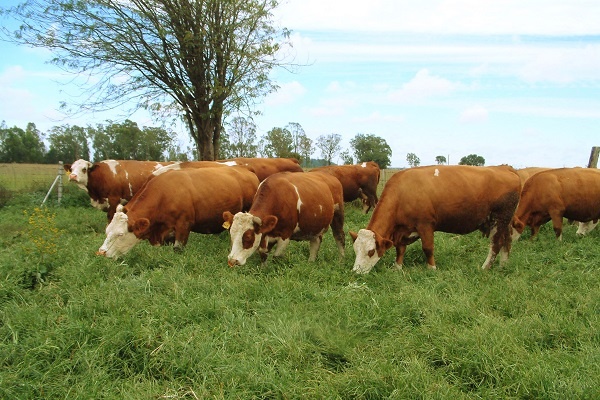By Frank Kamuntu
Using intensive pasture can threaten production by leading to metabolic imbalances and disease in pastoral animals.
Most crops that are grazed or used to make hay or silage – such as maize, oats, wheat, ryegrass, lucerne, soybeans, sorghum and Japanese radish – have the potential to build up toxic nitrate levels.
Nitrogen (N) is a basic building block of protein and is essential for good animal and plant production. Excessive quantities of nitrates (NO₃) in plants cause the animal to eat less, abort foetuses or to die.

Nitrate Toxicity
Excessive nitrate concentrations usually occur when plants grow in nitrogen-rich conditions or during a period of overcast weather.
Plants sprayed with 2.4-D herbicides may also accumulate a higher concentration of nitrates.
Drought, as well as high temperatures, insects, low light conditions and frost, can also lead to higher nitrate concentrations in pastures.
Such concentrations are particularly toxic to ruminants and could lead to the absorption of nitrate across the rumen wall into the blood steam.
The result is the oxidation of oxyhemoglobin to methemoglobin and a reduction in the blood’s oxygen-carrying capacity.
The first symptom is a blueish discolouration of the mucous membranes.
The blood also acquires a chocolate-brown colour because of the methemoglobin it contains.
A reliable symptom is the blue-grey discolouration of the cow’s vulva as opposed to a normal pinkish colour.
Nitrate toxicity can be confused with prussic acid poisoning (Hydrocyanic acid poisoning), as they have similar symptoms.
Prussic Acid Poisoning
Many forage crop species, including forage sorghum, contain the sugar compound cyanogenic glycoside.
The compound is not itself harmful.
When plants are stressed by factors such as overgrazing, hail damage, drought or wilting, the cyanogenic glycoside is converted into a new compound called hydrocyanic, or prussic, acid.
High levels of nitrogen fertilisation can also contribute to this condition.
When consumed, the hydrogen cyanide is absorbed into the blood stream where it prevents oxygen being released from the haemoglobin to tissue cells.
The animal consequently dies of asphyxiation.
Rumen microbes can create a prussic acid poisoning scenario; it may also occur when plants are trampled and chewed releasing the hydrocyanic cyanogenic glycoside into the rumen.
Prussic acid poisoning is distinguished by bright red blood that doesn’t clot easily.
Animals poisoned by prussic acid actually die from a shortage of oxygen.
Treatment is the injecting of sodium nitrate, which releases the cyanide from the haemoglobin in the blood and is excreted in the urine.
Animals usually recover after being treated.
Bloat
Bloat is a common digestive disorder caused by plant protein. It is often associated with the ingestion of lucerne and clovers.
Under certain conditions, stable foam is formed in the rumen, which impedes normal gas release, breathing and circulation. It can lead to the death of an animal.
Secondary plant products such as saponiene, cyanogenic glycosides and amines can also cause bloating. Bloat sensitivity differs from animal to animal. Oils and synthetic antifoaming agents are usually successful in treating bloat.
Prevention Tips
Apply nitrogen fertiliser in batches of different quantities, according to the growth potential of the pasture crop.
With ryegrass, for example; smaller batches during the colder months and bigger ones in the warmer spring months.
Use nitrogen fertiliser on the specific portion of pasture that’s been grazed or cut short.
Avoid grazing the area for at least 3 weeks after fertilisation or until the pasture has grown to about 25 cm high.
Hungry animals should preferably eat silage or hay for an hour before being given access to pastures that could be problematic.
At first, limit access to 30 minutes.
Then, if there are no problems, increase the grazing period.
Animals shouldn’t graze on wilted or damaged pastures for at least 2 weeks after the limiting factor has been removed or until the plants have completely frosted off, in the case of forage sorghum.
Provide additional sulphur for animals that graze pastures where there are potentially prussic acid problems.
The cyanide in the rumen and liver is then metabolised into thiosulphate and excreted by the animal.
Cutting lucerne before it wilts and allowing it to wilt on the trailer will reduce the risk of bloat.
Provide fibre-rich hay for animals that graze on luscious, green, irrigated pastures and adapt the lick supplementary feeding for the specific pasture used.

